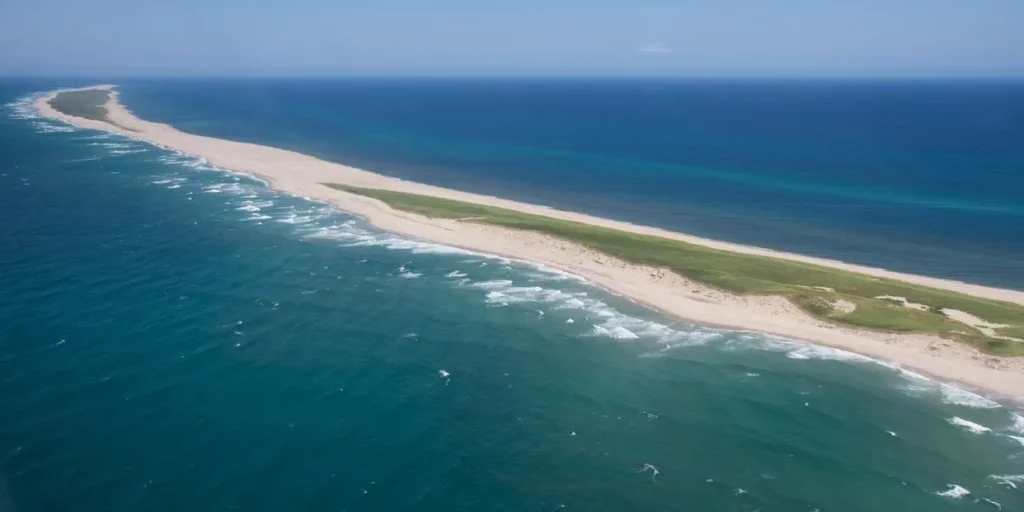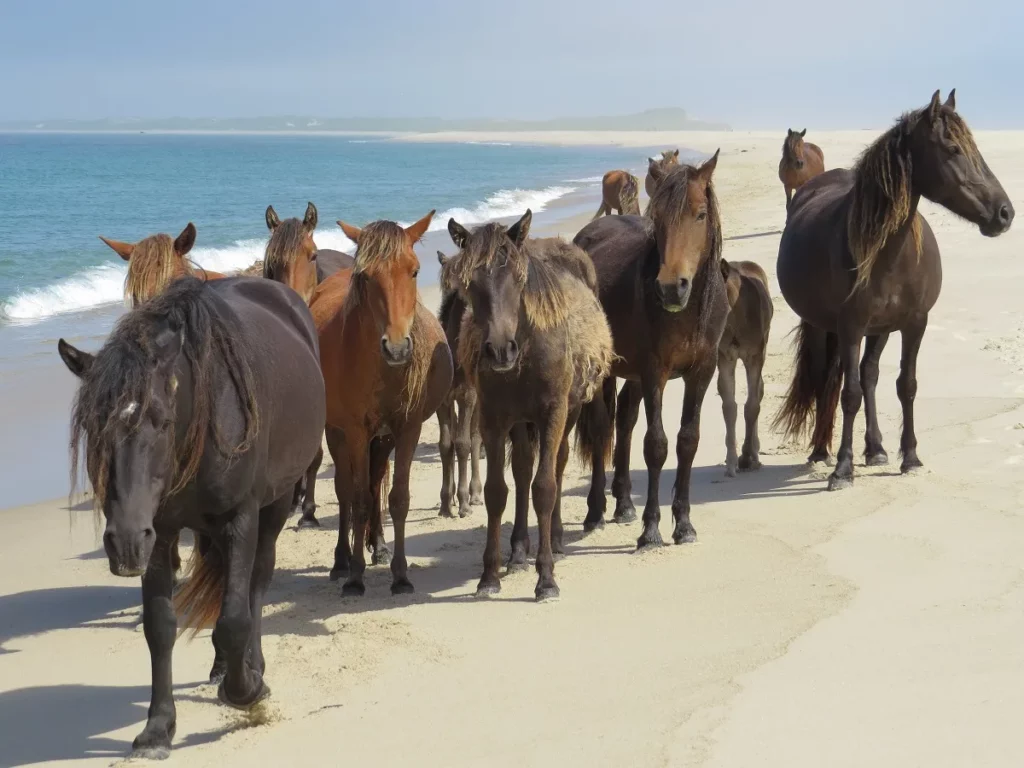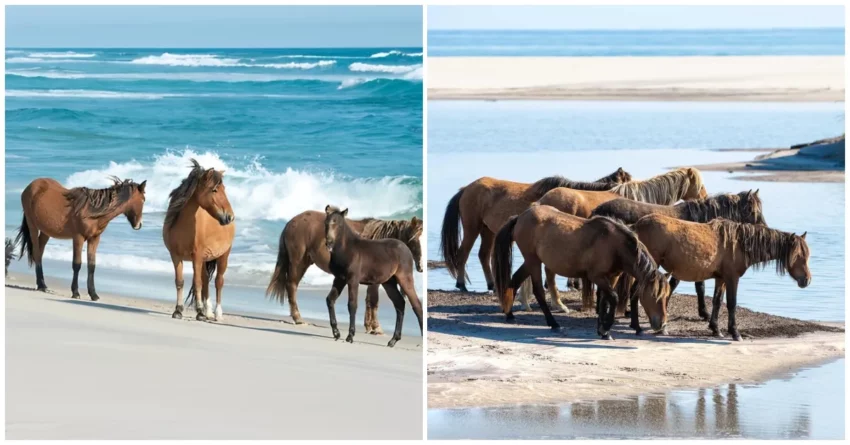Sable Island, a remote crescent-shaped sandbar located approximately 300 kilometers southeast of Nova Scotia, Canada, is home to a remarkable population of wild horses. These horses, with their thick, shaggy coats and sturdy bodies, have lived freely on the island for centuries, becoming a symbol of resilience and natural beauty. Despite the harsh environment, they have adapted to the sandy terrain, strong winds, and scarce food sources, making them one of the most fascinating wild horse populations in the world. The island itself is known for its ever-shifting dunes, unpredictable weather, and rich history, including its reputation as the “graveyard of the Atlantic” due to the many shipwrecks that have occurred along its shores.

Many stories have been told about the origins of these horses, with one of the most popular myths suggesting they swam ashore from shipwrecks. However, historical records reveal that they were introduced to the island in the 18th century. The first recorded introduction was by Reverend Andrew Le Mercier in 1737, though many of the horses were taken by sailors passing through the island. Later, more horses were brought, including those seized from the Acadians during their forced removal by the British. These horses were of mixed ancestry, with breeds such as Breton, Andalusian, and Norman, later mixed with horses from New England. Over time, they formed a unique and isolated wild population, completely independent of human care.

For many years, the horses were captured and removed from the island, often sold for meat or labor. In the 19th and early 20th centuries, their numbers declined significantly due to frequent roundups. By the 1950s, the remaining horses were at risk of disappearing completely. However, a public outcry led to a turning point in their fate. In 1960, the Canadian government officially protected the horses, prohibiting their removal and ensuring their survival on the island. Since then, they have remained untouched by human interference, allowing researchers to observe their natural behaviors and survival strategies in an undisturbed environment.

The horses have developed strong survival instincts, which help them endure the extreme conditions of Sable Island. The island has little fresh water, forcing the horses to dig in the sand to find underground water sources. Their diet consists mostly of marram grass and other sparse vegetation, making them remarkably adapted to the island’s limited food supply. Their thick coats protect them from the harsh winds and cold temperatures, while their small, strong hooves help them move across the soft, shifting sands. They live in family groups, with dominant stallions leading small bands of mares and young foals. These groups form tight social bonds and provide protection in the island’s challenging environment.

Today, there are around 450 wild horses on Sable Island, and they live completely free without human management. Their numbers fluctuate naturally based on the availability of food and water, as well as environmental factors. Because they have been isolated for so long, they have developed their own way of living without human influence. They are also protected as part of Sable Island National Park Reserve, which limits human activity to ensure that the ecosystem remains undisturbed. Other wildlife, including the rare Ipswich sparrow and the world’s largest grey seal colony, also call the island home, adding to its importance as a conservation site. Researchers continue to study the horses, learning valuable lessons about wild animal populations and their ability to survive in extreme conditions.

The wild horses of Sable Island have become a symbol of strength and independence. In 2008, they were declared the official horse of Nova Scotia, further cementing their importance in the region’s history and culture. They have inspired artists, photographers, and writers who are drawn to their untamed beauty and the mystery of their isolated existence. Though few people will ever see them in person, as the island is difficult to access, the horses remain a cherished part of Canada’s natural heritage. Their continued existence is a reminder of the power of nature and the importance of protecting wild animals in their natural habitats.
